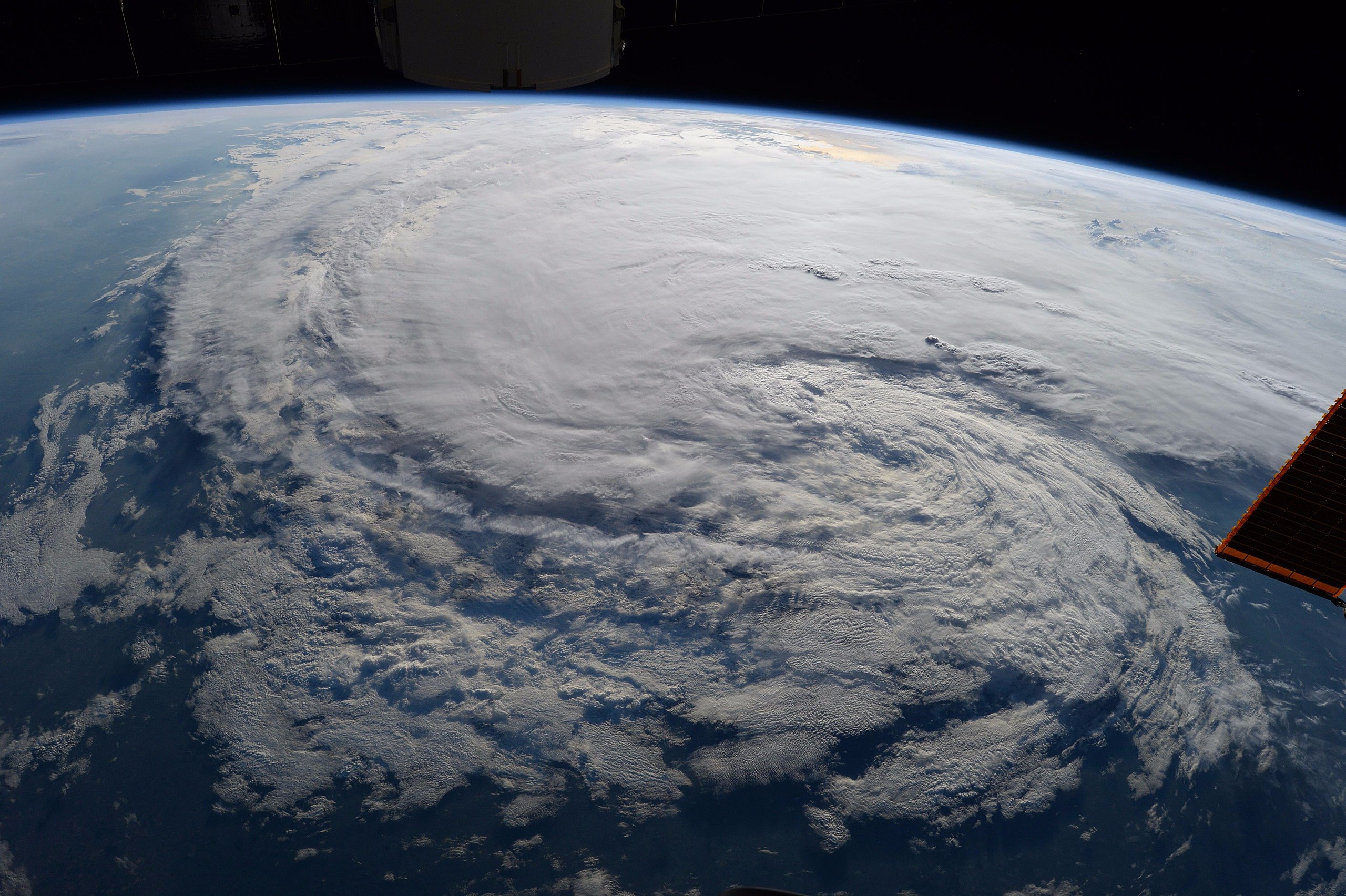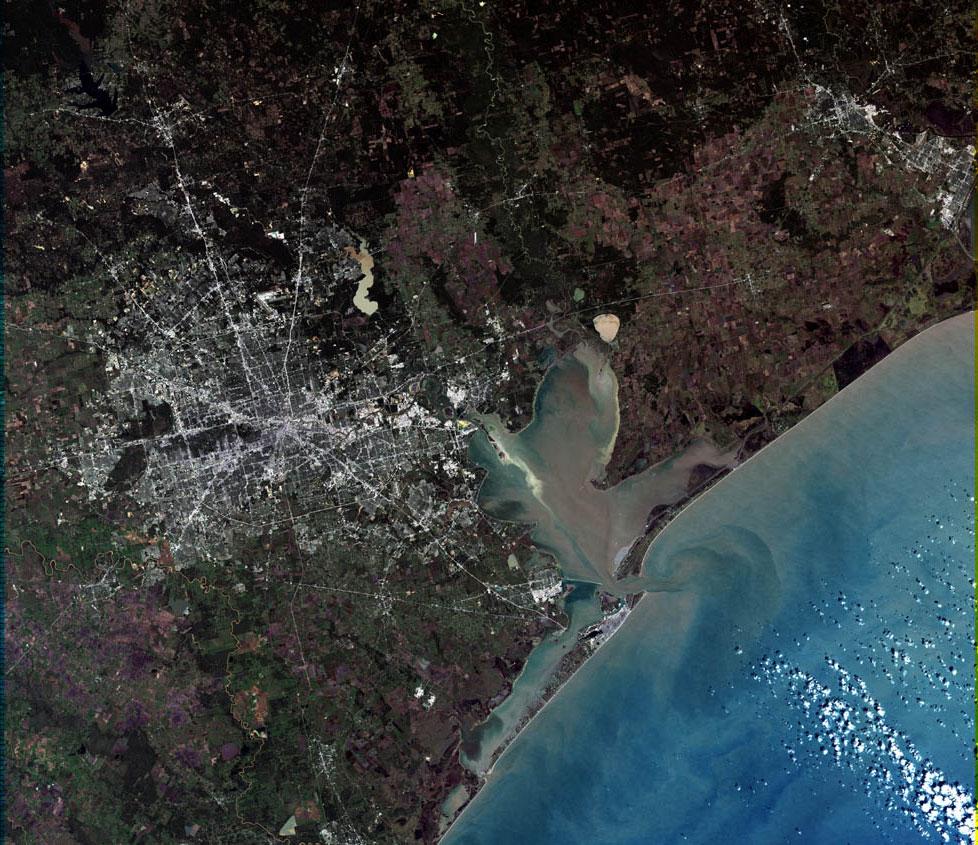"Harvey" was retired as a hurricane name due to the impacts on Texas
Randi Mann
Digital Reporter
Thursday, August 25th 2022, 4:33 am - On this day in weather history, Hurricane Harvey made landfall in Texas.
Hurricane Harvey tied Katrina for costliest tropical cyclone on record
This Day In Weather History is a daily podcast by Chris Mei from The Weather Network, featuring stories about people, communities and events and how weather impacted them.
Hurricane Harvey formed in the Atlantic on Thursday, August 17, 2017. The storm lasted until Sep. 2, 2017, impacting many areas including, Suriname, Guyana, Nicaragua, Honduras, Belize, Cayman Islands and the United States.
The storm was especially devastating for Texas and Louisiana. Overall, the hurricane caused 68 direct, 39 indirect deaths and $125 billion worth of damage. It tied Hurricane Katrina as the costliest tropical cyclone on record.

*"As Tropical Storm Harvey continued along the Gulf Coast, NASA astronaut Randy Bresnik took this photo of the storm Aug. 28 from the International Space Station–52."
Courtesy of Wikipedia*
Harvey hit Texas especially hard. The hurricane hit Texas a Category 4 storm. Within four days, Harvey brought 1,000 mm of rain to areas in eastern Texas. The extreme rain caused unprecedented flooding. Nederland, Texas, received 1,539 mm worth of accumulated rain. The excess water flooded thousands of homes, displacing over 30,000 people.
The National Weather Service (NWS) added two colours to the rain index to accommodate the added rainfall accumulation that Harvey dropped. On Aug. 26, the NWS issued flash flood emergencies across the Houston area.

Harvey hit Texas especially hard. The hurricane hit Texas a Category 4 storm. Within four days, Harvey brought 1,000 mm of rain to areas in eastern Texas. The extreme rain caused unprecedented flooding. Nederland, Texas, received 1,539 mm worth of accumulated rain. The excess water flooded thousands of homes, displacing over 30,000 people.
The National Weather Service (NWS) added two colours to the rain index to accommodate the added rainfall accumulation that Harvey dropped. On Aug. 26, the NWS issued flash flood emergencies across the Houston area.

*"Damage by Harvey to a marina in Rockport, Texas, on Aug. 28, 2017."
Courtesy of Wikipedia*
A family of six was killed in the Houston area when flooding swept their van off a bridge. Harvey also brought Texas several tornadoes, which severely damaged dozens of homes.
During the storm, both George Bush Intercontinental Airport and William P. Hobby Airport closed.
On Aug. 28, the U.S. Army Corps of Engineers started to control the flooding by releasing water from the Addicks and Barker Reservoirs into the Buffalo Bayou watershed. "It's going to be better to release the water through the gates directly into Buffalo Bayou as opposed to letting it go around the end and through additional neighbourhoods and ultimately into the bayou," explained the local Corps commander.

A family of six was killed in the Houston area when flooding swept their van off a bridge. Harvey also brought Texas several tornadoes, which severely damaged dozens of homes.
During the storm, both George Bush Intercontinental Airport and William P. Hobby Airport closed.
On Aug. 28, the U.S. Army Corps of Engineers started to control the flooding by releasing water from the Addicks and Barker Reservoirs into the Buffalo Bayou watershed. "It's going to be better to release the water through the gates directly into Buffalo Bayou as opposed to letting it go around the end and through additional neighbourhoods and ultimately into the bayou," explained the local Corps commander.

*"Houston's very flat topography makes flooding a problem." Courtesy of Wikipedia*
In Texas, there were 103 Harvey-related deaths.
In response to the catastrophic effects of Hurricane Harvey, President Donald Trump signed H.R. 601 into law. This designated $15 billion for relief.
On April 11, 2018, the World Meteorological Organization retired the name Harvey from the Atlantic cycle, mostly because of the devastation caused to Texas.
To learn more about Hurricane Harvey, listen to today's episode of "This Day In Weather History."
In Texas, there were 103 Harvey-related deaths.
In response to the catastrophic effects of Hurricane Harvey, President Donald Trump signed H.R. 601 into law. This designated $15 billion for relief.
On April 11, 2018, the World Meteorological Organization retired the name Harvey from the Atlantic cycle, mostly because of the devastation caused to Texas.
To learn more about Hurricane Harvey, listen to today's episode of "This Day In Weather History."
No comments:
Post a Comment